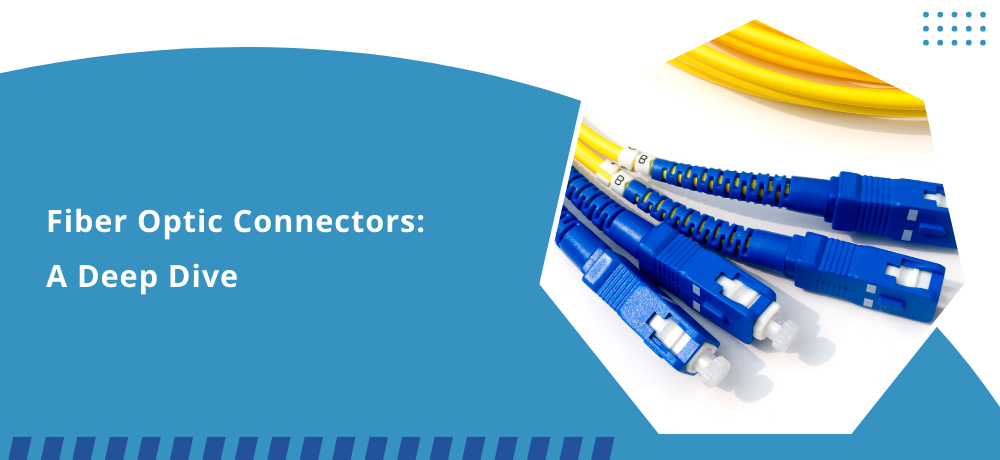Fiber Optic Connectors: A Deep Dive

Exploring the Heart of Connectivity
In the rapidly advancing world of telecommunications, the role of fiber optic connectors cannot be overstated. As the backbone of high-speed data transmission, these connectors play a pivotal role in ensuring seamless connectivity. Join me in this deep dive into the world of fiber optic connectors, where we'll unravel the intricacies, benefits, and applications that make them an indispensable part of modern communication networks.
Types of Fiber Optic Connectors:
Fiber optic connectors come in various types, each designed for specific applications. Some common types include SC (Subscriber Connector), LC (Lucent Connector), ST (Straight Tip), and MTP/MPO (Multiple-Fiber Push-On/Pull-Off) connectors. Each type has its unique design and features, catering to different needs in terms of data rates, density, and ease of use.
Connector Components and Structure:
Fiber optic connectors consist of several key components, including the ferrule, connector body, coupling mechanism, and boot. The ferrule is a critical part that holds the fiber in place, ensuring precise alignment for optimal light transmission. The connector body houses the ferrule and provides structural support, while the coupling mechanism allows for the connection and disconnection of connectors. The boot protects the fiber and ensures proper strain relief.
Alignment Techniques:
Achieving accurate alignment of fiber cores is crucial for minimizing signal loss and optimizing performance. Connectors use various alignment techniques, such as physical contact (PC), where the fiber ends physically touch, or angled physical contact (APC), where the fiber ends make contact at an angle. Additionally, there are expanded beam connectors that use lenses or prisms for alignment, offering robustness in challenging environments.
Single-mode vs. Multimode Connectors:
Fiber optic connectors are designed to accommodate either single-mode or multimode fibers, each with distinct characteristics. Single-mode connectors are optimized for long-distance transmission with a narrow core that allows a single light mode, while multimode connectors are suitable for shorter distances and have a larger core that supports multiple light modes. The choice of connector depends on the specific requirements of the optical fiber system.
Installation and Maintenance Considerations:
Proper installation and maintenance practices are crucial for ensuring the reliability and longevity of fiber optic connectors. Techniques such as fusion splicing and mechanical splicing are used to join fibers with low loss. Regular inspection and cleaning of connectors are essential to prevent contamination and maintain signal integrity. Connector designs also vary based on whether they are intended for field installations or factory terminations, influencing ease of use and durability in different environments.
Empowering Your Connectivity
In wrapping up our deep dive into fiber optic connectors, it's evident that understanding and harnessing this technology can be a game-changer for your business. As you navigate the intricacies of connectivity, ExcelLinx Communications is here to provide expertise, solutions, and support. Elevate your connectivity experience – let's empower your business together.
Get in touch with us today
To learn more about what we do, please click here. To contact us, please click here or call us at (647) 362-1979.